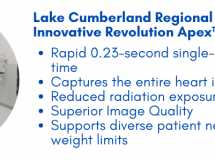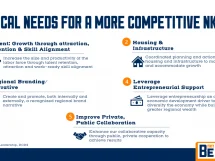PARTNER CONTENT
It’s no secret that COVID-19 has changed the way the world works and how people think about the everyday activities that they engage in, both online and out in the real world. Everything from how many people are allowed in the grocery stores to practicing “social distancing” wherever you go has made work, recreation, and time with family different from the way it used to be. But one of the biggest issues for some people isn’t the wearing of masks or having to wait in line until someone leaves a restaurant so they can go inside. It’s the privacy — or lack of it — that comes from contact tracing in order to try to slow the virus’ spread throughout various communities and specific locations. Companies want to track who’s going in and out, and what times those people are present.
That way, if someone tests positive for the virus, the company can notify anyone who might have been there at the same time as that person. It’s done as a matter of protection from something that could be deadly, and to reduce the spread of the virus throughout the community. Being able to quarantine people who may have been exposed helps to reduce the risk that those same people are going to unknowingly pass the virus along to others before they even know they’re ill. Some people feel they’re giving up too much of their privacy with this kind of tracing, and they want alternatives so they can feel secure from the virus and also secure from the intrusiveness of being asked to provide so much of their private information. There are ways to balance the issue, if done correctly.
What is Contact Tracing and How Does it Work, Really?
Contact tracing is designed to track a person’s movements. While there’s a reason it’s done in regard to COVID-19 and physical locations, there’s no reason it needs to be done in the online or virtual environment. With a USA VPN for privacy, it’s possible to make sure online transactions and navigation is secure, so too much privacy isn’t being given up. There’s a large difference between tracking people who come into physical contact with one another and tracking people’s whereabouts online. The main goal of contact tracing is literally is its name. Companies want to trace who comes into contact with whom, so they can track the spread or potential spread of the virus from person to person, and alert people if they may have been put at risk.
In most cases, companies ask for a person’s name and email address or phone number, so they know who the person is and can contact them at a later date if it becomes necessary. Many companies also have scanners for the bar code on the back of a person’s driver’s license, and this records the person’s information along with when they arrived at a particular location. Using apps for tracking people and determining where they’ve been is also becoming more common. These apps collect personal data, but they can also follow movements online that aren’t part of the original point of the tracking. That’s leading some people to be concerned about their privacy, even though they understand the need for contract tracing at physical locations.
Why Contact Tracing Matters for the Health of a Community
Contact tracing is an excellent way to slow the spread of COVID-19 when it’s used correctly. But there are pitfalls and risks with the tracing, just like there would be with any other type of personal information collection. Some of the biggest concerns come down to where — and how — the information is being stored, along with how much tracking is really being done. If companies are keeping track of who goes into their physical locations, that seems acceptable. But what about apps that track a person’s location all the time? The goal there is to focus on being able to alert people in any area with a high number of cases of the virus. It’s also to co-ordinate whether that person was in a location where an affected person may have been, at the same or a similar time.
If more people can be told that they may have been exposed, and if they can get that information quickly, then they have the opportunity to do their part by self-quarantining so they reduce their risk of spreading the virus to other people. Contact tracing works well for that if an app that tracks a person all the time is used, but in return for that level of security and willingness to help slow the spread of COVID-19, people must also give up a portion of their privacy by allowing the app to have access to their data. How much access they’re granting and what the app is really looking at are what matters, along with how the information is being stored, who it’s being shared with, and what those companies or individuals are doing with it.
Protecting Privacy is Still Possible, When Handled Correctly
With a number of big companies like Apple and Google scrambling to make apps to help with contract tracing, and plenty of smaller companies putting their focus on these apps as well, there are renewed concerns over the privacy of individuals. People see the benefits, but they also see the risks. The goal is to increase the benefits as much as possible, while working to keep the risks and privacy violations low. What is considered an acceptable level of risk is going to vary depending on the person, but having to provide more than basic information is going to lead a lot of people to avoid these apps. While they may want to help slow the virus’ spread, they may not be willing to help with that at the risk of their own online privacy.
Additionally, being required to allow the app to access your internet or browser history in any way may also mean fewer people will use these apps. Tracking where a person physically is makes logical sense to reduce the virus’ effects on a community. But tracking a person’s online movements has no place in reducing COVID-19 risk. Instead, it simply invades the privacy of the individual in ways that don’t make specific locations any safer or help that person protect themselves and others from the virus. By choosing an app that allows contact tracing, people should make sure they aren’t giving up much more of their privacy than they realize. Allowing permissions for an app can be a slippery slope that can lead to significant privacy concerns.




















Add Comment